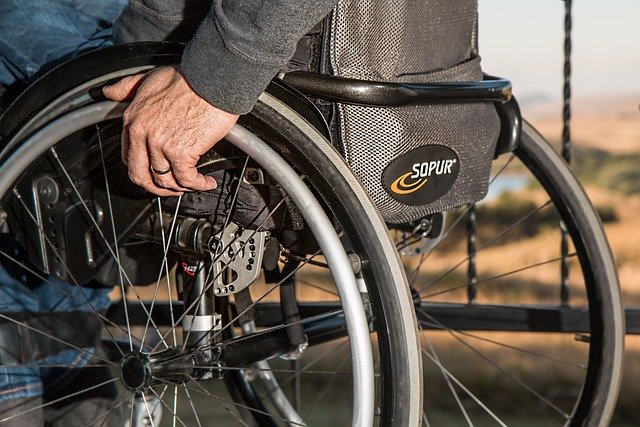Electric Scooters for Seniors: Enhancing Mobility and Independence
Electric scooters have become valuable mobility aids for older adults seeking to maintain their independence and quality of life. These specially designed vehicles offer seniors a convenient way to travel short distances, run errands, and participate in social activities without the physical strain of walking. As mobility challenges increase with age, electric scooters provide a practical solution that combines ease of use with enhanced freedom. Understanding the various options, features, and maintenance requirements can help seniors select the most appropriate electric scooter for their specific needs.

Key Functions of Electric Scooters for Seniors Explained
Electric scooters designed for seniors typically feature intuitive controls that require minimal physical effort. Most models use a simple throttle system operated by thumb or finger pressure to control speed, eliminating the need for strenuous pushing or pedaling. The steering column generally offers adjustable height settings to accommodate different user preferences and physical conditions. Many scooters include automatic braking systems that engage when the throttle is released, providing an additional safety feature for users with slower reflexes. Battery indicators display remaining power levels, while speed controls allow users to select comfortable traveling speeds, typically ranging from 4 to 8 mph for standard models.
Advanced models may include additional functions such as LED lighting systems for visibility, storage compartments for personal belongings, and suspension systems that improve ride comfort over uneven terrain. Some electric scooters also offer programmable speed settings that can be adjusted according to the user’s confidence level or environmental conditions. These thoughtfully designed functions make electric scooters particularly suitable for seniors who want to maintain their mobility without compromising on safety or comfort.
How Electric Scooters Improve Independence for Seniors
The ability to move freely without relying on others represents one of the most significant benefits electric scooters provide to older adults. For seniors who have given up driving or find walking long distances challenging, electric scooters bridge an important mobility gap. They enable independent trips to grocery stores, medical appointments, community centers, and social gatherings that might otherwise require assistance from family members or caregivers.
This enhanced mobility directly impacts psychological well-being. Research shows that maintaining independence correlates strongly with better mental health outcomes for seniors, reducing feelings of isolation and depression. Electric scooters allow older adults to continue community participation and social engagement, which are crucial factors in maintaining cognitive function and emotional health. Additionally, the confidence that comes from knowing one can navigate independently often translates to increased activity levels and greater willingness to venture outside the home, creating a positive cycle of engagement and well-being.
Different Types of Electric Scooters Designed for Older Adults
Electric scooters for seniors come in several distinct categories, each designed to address specific mobility needs:
Travel scooters feature lightweight, compact designs that can be easily disassembled for transport in a vehicle. Weighing between 70-100 pounds when broken down into components, these models prioritize portability. They typically have smaller wheels and shorter battery ranges (10-15 miles) but offer excellent maneuverability in tight indoor spaces. Travel scooters are ideal for seniors who want to bring their mobility aid on trips or store it in limited spaces.
Mid-size scooters strike a balance between portability and performance. With larger wheels, more substantial padding, and extended battery ranges of 15-20 miles, they provide greater comfort for regular daily use. These models can handle both indoor and moderate outdoor terrain while still being manageable for transport with appropriate vehicle accessories.
Heavy-duty scooters are built for maximum stability and performance on varied outdoor terrain. They feature reinforced frames supporting weights up to 500 pounds, larger wheels with enhanced suspension systems, and extended battery ranges of 20-30 miles. These models prioritize comfort and durability for seniors who spend significant time outdoors or require additional support.
Three-wheel models offer enhanced maneuverability and a tighter turning radius, making them excellent for indoor use and navigating narrow spaces. Four-wheel configurations provide greater stability, particularly on uneven surfaces, making them more suitable for outdoor use or for users with balance concerns.
Tips for Maintaining Electric Scooters in Good Condition
Regular maintenance significantly extends the life and reliability of electric scooters. Battery care represents the most critical maintenance aspect – batteries should be charged according to manufacturer guidelines, typically after each use without overcharging. Most modern scooters use sealed lead-acid or lithium-ion batteries that perform best when kept at moderate charge levels.
Tire maintenance involves regular checks for proper inflation in pneumatic tires or inspection for wear in solid tires. Proper tire pressure ensures optimal performance, energy efficiency, and ride comfort. For pneumatic tires, a monthly pressure check using a standard tire gauge helps prevent premature wear and potential blowouts.
Cleaning the scooter regularly prevents dirt and debris from affecting mechanical components. A damp cloth works well for the frame and plastic components, while electrical connections should be kept dry and free from corrosion. Moving parts benefit from periodic lubrication with manufacturer-recommended products to prevent unnecessary friction and wear.
Annual professional inspections are recommended to check electrical connections, braking systems, and structural integrity. These inspections can identify potential problems before they become safety hazards or costly repairs. Many mobility equipment providers offer maintenance services specifically for electric scooters.
During winter months or extended periods of non-use, batteries should be removed and stored in climate-controlled environments. The scooter should be cleaned thoroughly before storage, with moving parts properly lubricated to prevent seizing. Covering the scooter protects it from dust and environmental factors that could cause deterioration.
Electric Scooter Selection Considerations for Seniors
When choosing an electric scooter, seniors should carefully evaluate their specific mobility needs and physical environment. Weight capacity represents a primary consideration, as exceeding the recommended limit affects performance and safety. Most standard models accommodate 250-300 pounds, while heavy-duty versions may support up to 500 pounds.
Battery range should align with typical usage patterns. Seniors who plan longer excursions need models offering 15-20 mile ranges, while those using scooters primarily indoors may find 10-mile ranges sufficient. Terrain considerations also influence selection – those navigating uneven outdoor surfaces benefit from larger wheels and enhanced suspension systems.
Storage and transportation requirements should factor into the decision-making process. Seniors who need to transport their scooter frequently should prioritize models with easy disassembly features or lightweight construction. Home accessibility, including doorway widths and turning spaces, must accommodate the scooter’s dimensions for practical daily use.
Budget considerations extend beyond the initial purchase price to include maintenance costs, battery replacement expenses, and potential insurance coverage. Many mobility equipment providers offer financing options or rental programs that allow seniors to experience different models before making a commitment.
Electric scooters provide seniors with valuable tools for maintaining independence and quality of life. By understanding the functions, benefits, types, and maintenance requirements, older adults can make informed decisions about incorporating these mobility aids into their daily routines, enhancing their ability to remain active and engaged in their communities.




